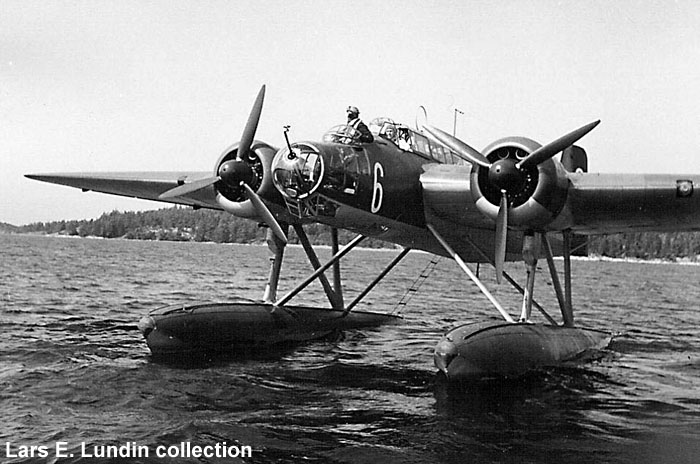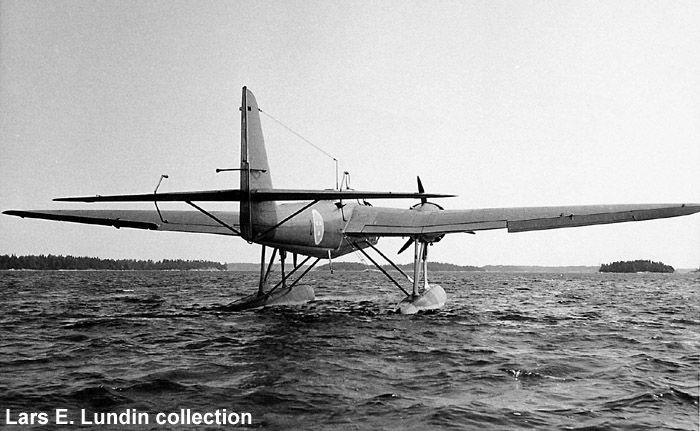|
|
||
|
T
2 - Heinkel He 115 (1939-1952) |
||
| Page 1 (7) | ||
|
|
||
 |
||
|
On
the 9th of April 1940, Germany occupied both Denmark and the
most important parts of Norway in a lightning attack - operation Weserübung.
In connection to this, Germany dictated a number of terms to Sweden,
terms which were impossible for the Swedish government to agree with. The Germans demanded, for instance, that Sweden did not mobilize further troops.
Germany demanded also Sweden to let three railway trains each of
30-40 wagons loaded with war material to be transferred trough Sweden to
Narvik.
The
Swedish refusal resulted in a crisis in the relationship between Sweden
and Germany. As a war situation seemed possible, the T 2s left their
permanent base at Hägernäs. They were relocated to Gålö, a war base
in the archipelago south of Stockholm. The work to enlarge the Gålö
base started immediately. Until more workshops and living quarters were
built ashore, the navy ships Dristigheten and Rane was use as
floating accommodation.
As
alternative bases, Märsgarn (south of Gålö, see chart at page 5), Gryt and
Loftahammar were also used during the years of preparedness.
Other war bases were
also used. The widespread archipelago provided many
suitable places for operations and good camouflage of the aircraft and
equipment.
The
aircraft were based off F 2 at Hägernäs until the WWII was over. Click here for a detailed list of all T 2s!
Span 22,275 m. Length 17,30 m. MTOW 9,450 kg.
|
||
|
For the
Model Builder Matchbox had a plastic model kit of He 115 in scale 1:72. It included decals for two German and one Finnish versions. It would be a excellent model of a T 2 with Swedish decals. Click on thumbnail for larger image. |
 |
|
 |
||
| The aircraft commander/observer of No. 106 looks out for orders | ||
 |
||
|
No. 106 before take-off |
||
|
|
||
|
|
||
|
|
||
|
© Lars Henriksson |
|
Updated 2010-07-24 |